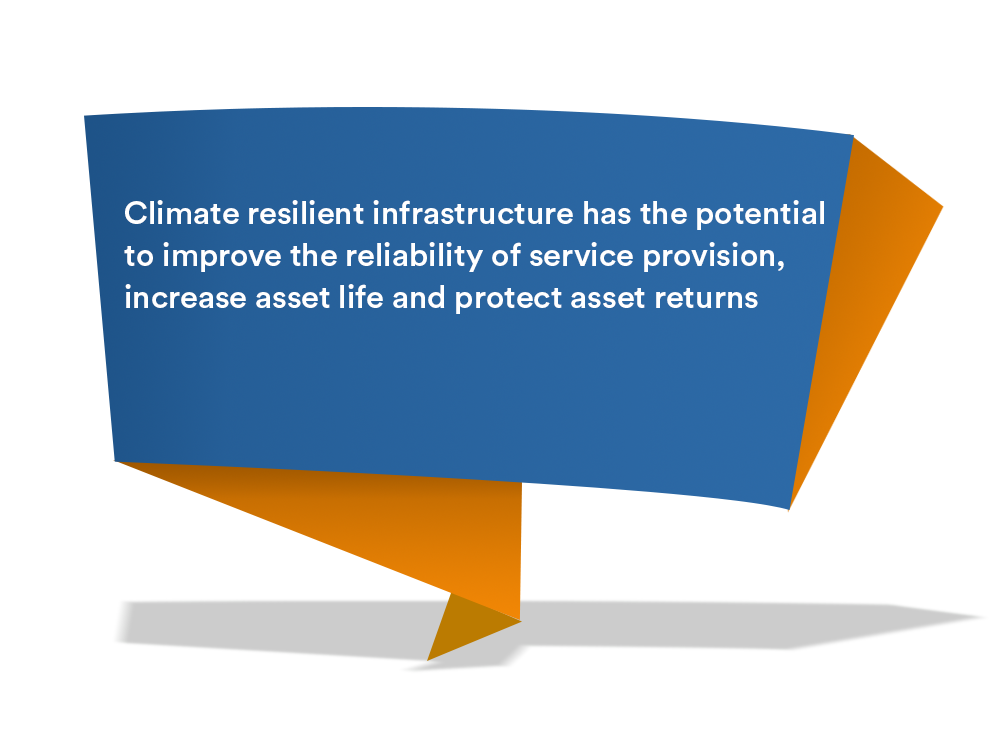IAs economies around the world evolve, countries make significant investment into setting infrastructures which plays a catalysing role in boosting the economy. Governments in low and middle income countries around the world invest between 3.4-5 percent of their Gross Domestic Product (GDP) in infrastructure every year.1 Despite the significant investment, the quality and adequacy of infrastructure varies largely from one country to another. Millions of people and businesses often need to bear consequences of over strained or fragile infrastructural arrangements which are stretched to limit during any natural hazard. Estimates suggest a potential USD 250 billion loss in assets and USD 1 trillion at risk over the next five years from climate impacts.2
Climate resilient infrastructures are defined as an architecture, which is planned, designed, built and operated in a way that anticipates, prepares for, and adapts to changing climate conditions. It is estimated that an average of 3% additional upfront capital investment is required to build esilience into infrastructure, yet every dollar invested in resilience generates four dollars of economic value. 3
Cement concrete infrastructures has stood through the test of time as more climate resilient than any other building materials. Some of the prominent apsects that make concrete the most preferred builing material are detailed below:
Byproducts from other industries, such as fly ash and ground granulated blast furnace slag (GGBS), can be used to partially replace clinker in cement thereby reducing the embodied emissions in the construction material.
Porous concrete can help to reduce the risk of flooding in urban areas, draining and filtering rain away from the surface. Porous concrete is produced with little to no fine aggregate content and typically comprises of 15-25% voids, which allow water to flow through the concrete and sink into the ground.
Albedo is the measure of the fraction of solar energy reflected a surface. Lighter colour surfaces reflect light and have a high albedo, while darker surfaces absorb light and have a low albedo. Concrete has an albedo of 0.4, which enables it to reflect relatively more of the sun’s radiation than some of the other building materials such as asphalt, thereby moderating the warming impact of solar infrared rays.
Climate resilient infrastructure has the potential to improve the reliability of service provision, increase asset life and protect asset returns. Government can play a catalysing role in encouraging climate resilient infrastructure. Public procurement processes can act as templates requiring bidding entities to consider climate resilience when bidding projects (by accounting for costs over the asset’s lifetime under alternative scenarios). More and more stakeholders today are realising the significance of imbibing climate resilience in infrastructure to protect critical socio economic infrastructure and interest of citizens.
